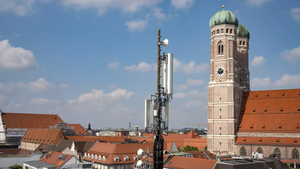Huawei to build new £1B UK R&D center after local council gives blessing
The go-ahead by authorities in Cambridgeshire will anger US officials and put further pressure on the government as it considers Huawei's future role in the UK.

China's Huawei has received the go-ahead from local authorities for a £1 billion ($1.1 billion) R&D and manufacturing center in Cambridge, a move that seems bound to enrage US officials and pile further pressure onto UK Prime Minister Boris Johnson.
The timing of the approval by South Cambridgeshire District Council is awkward as the Conservative government faces calls from US officials and members of its own party to reconsider a January decision that imposed restrictions on the controversial Chinese vendor but stopped short of banning it from the country's 5G or fiber broadband markets.
Critics say the company is a threat to national security because products could include "backdoors" allowing China's government to spy on other countries and even sabotage critical infrastructure – charges Huawei has repeatedly denied.
Huawei has rejected claims it timed this week's move so that any decision about its future UK role would be even harder for the UK government.
It started planning the investment back in 2017 before acquiring the necessary land the following year, said Victor Zhang, the company's global head of government affairs, on a call with reporters this afternoon. "Huawei could not have predicted the timing of the approval of Phase 1 by the district council," he said.
Under that phase of the project, Huawei plans to invest £1 billion in a 50,000-square-meter campus that will eventually employ 400 highly skilled workers. The new center will focus on optical electronics R&D and manufacturing and is set to become the international headquarters for this business area, catering to demand outside China, which will continue to have its own optical electronics HQ.
Huawei already maintains an optical electronics facility in Ipswich, another UK town, but the new center would provide access to one of the UK's top universities and situate it within the heart of the so-called Silicon Fen, where numerous technology and science firms are based, including ARM, the UK chip designer now owned by Japan's Softbank.
Zhang said any suggestions the Cambridge facility would allow Huawei to work around the latest US restrictions were "simply wrong." Sanctions recently proposed by US authorities would prevent Huawei from buying any components made with US design expertise or technology, potentially cutting the Chinese vendor off from critical suppliers including Taiwan's TMSC, which supplies many of its semiconductors.
"R&D on this site will be for optical devices used in fiber-optic systems and will use Huawei technology only," Zhang told reporters, declining to share details at this stage of any plans beyond Phase 1 of the project.
Huawei also regards fiber-optic components as one of the least sensitive areas from a security perspective, a spokesperson subsequently told Light Reading.
Want to know more about 5G? Check out our dedicated 5G content channel here on Light Reading.
Huawei's latest investment plans could serve as an uncomfortable reminder of the Chinese company's importance to the UK telecom sector and an economy reeling from the impact of the coronavirus pandemic.
The company plays a vital role in the mobile networks of BT-owned EE, Vodafone and Three UK – a subsidiary of Hong Kong's CK Hutchison – and is also one of the main providers of fiber-optic systems for BT, alongside Adtran, a US firm, and Finland's Nokia.
Service providers have fiercely resisted calls to ban the company, insisting that a rip-and-replacement job would cost hundreds of millions of dollars and delay the UK's rollout of 5G networks, which the industry is positioning as a vital tonic for an economic recovery.
BT, Vodafone and Three have all previously argued they can mitigate any security risks by keeping Huawei out of their "core" systems, the control centers of the networks. But others, including Sweden's Ericsson, say the lines between the core and other network domains will blur with the transition to 5G, which allows operators to host critical functions much closer to basestation sites.
Related posts:
— Iain Morris, International Editor, Light Reading
About the Author(s)
You May Also Like


.jpg?width=300&auto=webp&quality=80&disable=upscale)









